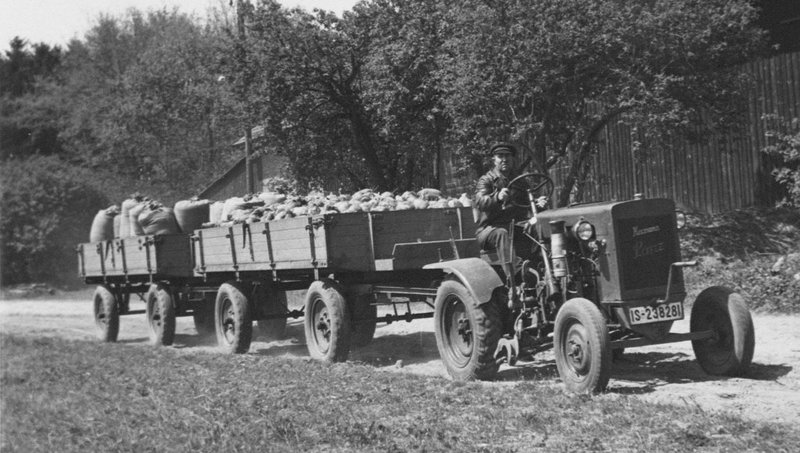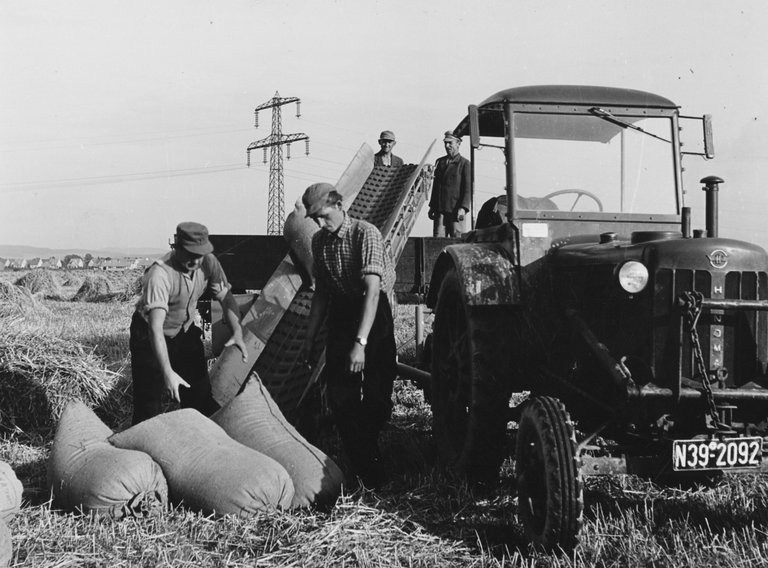Advancing Innovation in Agriculture for more than 150 Years
From hoof buffers to tires to pneumatic hoses: For more than 150 years, Continental has been developing products and solutions for agriculture. Today, we are delivering new solutions and initiatives for the agricultural sector involving digitalization, automation and sustainability.
Old farmsteads, grazing cows and chugging tractors – these are the images that spring to many people’s minds when it comes to agriculture. But even in the past, this rural idyll was no reflection of reality.
More than 150 years ago, agriculture essentially meant tough physical work. Today, modern, high-performance agricultural technology is indispensable in the efforts to feed a steadily growing world population. Since its foundation in 1871, Continental has helped shape the development of agriculture with numerous innovations in rubber, plastic, sensor technology and electronics – from hoof buffers for horses through to autonomous field robots.
Rubber Proves an All-Rounder from Early Days
In 1871, rubber was a material of the future, which the Continental engineers quickly mastered and with which they developed ever more sophisticated solutions. After beginning with raincoats, hot water bottles or bicycle and horse carriage tires, the applications became increasingly complex, including surgical and technical items. Soon, rubber products for agriculture were also added to the portfolio. Hoof buffers for improving the mobility of horses and for preventing them from slipping on ice were produced from 1875 onward. In all probability, this was the product that brought the horse into the Continental logo. The buffers were followed by knee guards for field workers and finally milk can rings, which enabled the airtight sealing of milk cans for the first time. This meant that milk could be stored longer without going bad – an important contribution to food hygiene.
In 1928, the first tractors with Continental pneumatic tires rolled onto the fields. At the same time, Hanomag launched its legendary RD 28 tractor in Hanover. From 1930 onward,
Continental produced special drive belts that were ideal for use in agricultural machinery owing to their low weight, lengths of several meters and enormous flexibility. Back then, steep-angle conveyor belts helped with the grain harvest. Four men took around a week to harvest one hectare of wheat, with a yield of around 2.3 metric tons per hectare. A modern combine harvester now covers the same area in half an hour – with a yield of 3.5 metric tons per hectare.
In the wake of World War II, Continental introduced many more innovations for agricultural machinery onto the market. This was no coincidence, because with the tractor boom, engine power finally replaced horses and other draft animals. The number of tractors increased from just under 140,000 in 1950 to more than a million in 1963. In addition to drive technology, the main focus was on efficiency and industrial safety. Examples here include the Multiflex V-belts and special-purpose hoses for threshing machines, drive belts in pumps, saws and small machines, as well as flexible tank and filling hoses. Greater comfort when driving and working was also achieved through tailor-made rubber mounting solutions, which effectively damped vibrations, provided noise insulation and reduced stresses. Today, Continental supplies belts, hoses, air springs and bearing elements to world-leading manufacturers like AGCO/Fendt and Claas. After all, the agricultural technology market has long been internationalized. Incidentally: Manufacturers of agricultural machinery also use Continental developments in advanced driver assistance systems and the vital connectivity technology used to stay in touch with the world outside of the cab.


















